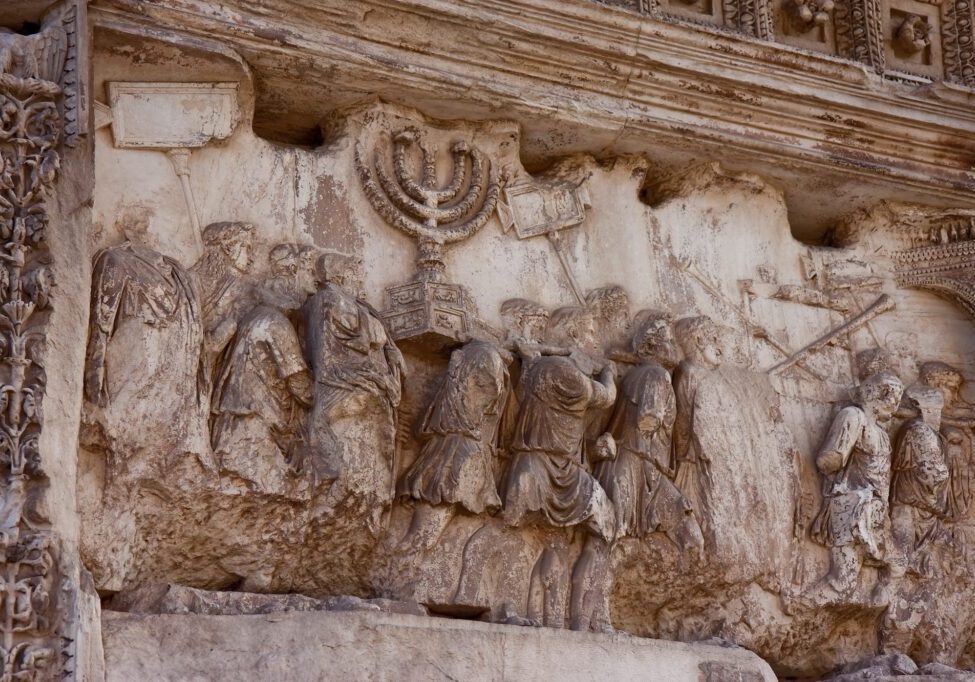Australia/Israel Review
Down, but not yet out
Apr 14, 2014 | Dennis Ross

Moving beyond the Israeli-Palestinian impasse
Dennis Ross
In 2013, US Secretary of State John Kerry looked at the Middle East, saw enormous upheaval, and judged that the last thing the United States needed was to add to this upheaval. In his view, as long as there was a certain level of stability between Israelis and Palestinians, Washington’s task was to build upon it and make certain it was not lost. He also believed that his personal relations with the two leaders gave him the potential to produce an agreement.
TOWARD A FRAMEWORK OF PRINCIPLES
Secretary Kerry heard early on from both leaders that neither had any interest in interim arrangements. After deciding that a framework agreement was not possible, he began to focus on a “framework of principles” that would create a clear picture of how to resolve the core issues of borders and security and, with a lesser degree of specificity, provide direction for resolving refugees and Jerusalem.
He was able to get the two sides to resume direct bilateral talks last summer, but they were not productive. As a result, he and his team, led by Martin Indyk, gradually became more involved in dealing with both parties. Kerry’s discussions went deeply into all of the core issues; his aim was to establish that Israeli and Palestinian acceptance of the framework principles, with accompanying reservations, would provide the basis for detailed negotiations. His efforts produced the most serious, detailed discussions on the core issues since 2000, during which he apparently made progress.
Yet the gaps remained real. In fact, after Kerry briefed Palestinian Authority President Mahmoud Abbas on the framework he was readying, Palestinians publicly indicated that Abbas was not prepared to accept it. Amid recent efforts to bridge the gaps, Kerry and his team also faced the difficult issue of additional prisoner releases.
HITTING A SNAG AT THE FOURTH TRANCHE
The Palestinian prisoners held in Israel since before the 1994 Oslo Accords have long been problematic. Last summer, Washington relaunched negotiations on the issue, with Prime Minister Binyamin Netanyahu agreeing to do what none of his predecessors would: release these prisoners in four tranches. The first three tranches, which involved only Palestinian prisoners, roiled Israeli politics; the last one would have included Israeli Arabs, an even harder pill to swallow domestically.
In the end, Israel was unable to accept the prospect of releasing the last tranche without assurances that the Palestinians would continue negotiations beyond their April commitment. Meanwhile, Abbas let it be known that he wanted to continue the process even as he was signalling that he could not accept the Kerry framework as it stood. To do so, he needed additional prisoner releases and some assurances on Israeli settlements.
Working with both sides, Washington formulated a package to overcome these problems and keep the process going. Under this arrangement, Israel would release the fourth tranche and several hundred additional prisoners, and also agree to a limitation on settlement activity. In return, Abbas would extend the negotiating process at least through the end of the year and refrain from going to the United Nations and seeking entry into international organisations and conventions.
The logic behind this package reflected a pattern often seen in past negotiations: Israel is asked to take steps it sees as very difficult, and what the Palestinians will do in turn it sees as insufficient, and so Washington steps in to offer compensation that the Palestinians cannot. US efforts make the Israeli moves possible, which in turn produce something for and from the Palestinians. For example, Israelis have frequently raised the issue of Jonathan Pollard, a spy imprisoned in the United States since 1987. In their view, Pollard’s release would diminish the political difficulty of taking certain steps in the peace process.
EVALUATING THE US PACKAGE
Since it became public, the US package has been attacked from the right and left, often in terms of narrow criteria. Yet one should consider its logic based on broader criteria. First, if Secretary Kerry has in fact made real progress as he believes, then it makes sense to lock that progress in rather than see it all lost by allowing the process to collapse.
Second, the regional context is important. Given the upheaval elsewhere in the Middle East, does Washington really want to add the possibility of real turmoil between Israelis and Palestinians?
A third criterion is the broader perspective of US foreign policy. Given current international developments, Washington needs to show signs of its effectiveness, not ineffectiveness. Another high-profile setback now would affect how other governments behave toward the United States.
OUT OF THE IMPASSE
As the March 29 deadline for the release of the fourth tranche came and went, Abbas – who was under great pressure and facing open challenges to his leadership – took steps to show that this obligation could not be ignored, signing papers of accession to 15 international conventions. Israel responded negatively, refusing to release the last tranche. Yet both sides continue to meet bilaterally and trilaterally, showing that they are seriously considering whether there is a way out of this. Going forward, all parties should consider the following measures:
Option One: Salvage the Package
Washington should first see whether the existing package can still be salvaged. To step back from the brink, the Palestinians could suspend their effort to accede to the fifteen conventions, while Israel could move ahead with releasing the final tranche.
Option Two: Invite the Parties to Talk in Washington
If option one is unavailing, Secretary Kerry could send a letter laying out the principles that serve as terms of reference and inviting the two leaders to send teams to Washington to negotiate on their basis. Should the sides simply agree to come in response to an American invitation, they could retain distance from the terms and preserve some political cover. To make this approach more meaningful, Washington could talk about simultaneous steps the two sides could take to create a better climate for the negotiations.
The United States has used this technique in the past with varying degrees of success. One potential downside is that if the Israelis and Palestinians respond to the invitation in writing, they are likely to outline positions that would be difficult to back away from later.
Option Three: Present a US “Best Judgment” for How to Resolve the Conflict
Kerry could also declare that after months of what has by all accounts been a serious effort, he will present his “best judgment” on what it takes to resolve the core issues, at least in principle. Some would argue that this is a positive step, as it would show that Washington has done its best and established a set of standards that can be picked up on later. If the two sides are not ready to accept Washington’s best judgments at this juncture – which seems likely – then this is basically a walk-away strategy.
Alternatively, if the two sides do not want these US principles made public as the new standards for resolving the conflict, Kerry could use this option privately as a tactic to bring them back to the current package. Yet the one thing you cannot do in such negotiations is bluff. In other words, Washington has to be prepared to live with the consequences – if it privately presents its best judgments and the response from both sides is “no”, the result could be a downward spiral. Once the United States walks away, the vacuum would be filled by negative, competing steps that bring out the worst in each side.
Option Four: Coordinated Unilateralism to Restore Faith in Two States
Washington could also work out steps separately with each side, not as part of an ongoing bilateral negotiation. This might be easier to achieve than reaching a formal agreement. One problem with the current effort is that it has not sought to dispel the deep disbelief and loss of faith surrounding the negotiations. While confidence is reparable, belief and faith are very difficult to restore once lost. Today, each side doubts the other’s commitment to a two-state outcome. In response, the United States could create a specific agenda of steps for each side to prove its commitment to the other.
For example, Israel could pledge to build only in the main settlement blocs. It could also open up “Area C” of the West Bank to Palestinian economic activity. For their part, the Palestinians could talk about “two states for two peoples.” If they cannot bring themselves to talk about a “Jewish state”, they can speak of the historical reality of two nationalist movements competing for the same space. Talking about the Jewish people and their right to self-determination in a part of historic Palestine does not deny the Palestinian narrative or negate Palestinian rights to self-determination.
Unilateral steps could also include a third “further redeployment” of Israel’s presence in the West Bank — an Oslo provision that was never implemented. If Israel agreed to such a move, Washington could ask the Palestinians what they are willing to do in return to address Israeli concerns. These and other steps could help prevent collapse and new upheavals while moving the parties in a more favourable direction.
THERE IS NO OTHER OPTION BUT TWO STATES
Some advocate a one-state alternative, but there is not a single place in the Middle East where two separate national identities live in peace within the same state. The only answer is two states for two peoples. At the end of the day, the parties must find a way back to this. The question is how to manage the process in such a way that disbelief and cynicism do not shape the future, making it profoundly harder to do what is ultimately necessary.
Ambassador Dennis Ross is the William Davidson Distinguished Fellow and Counsellor at The Washington Institute for Near East Policy and a long serving US official involved in mediating the Middle East conflict over several US Administrations. This summary was prepared by Harry Reis based on a lecture given on April 4. © Washington Institute for Near East Policy, reprinted by permission, all rights reserved.
Tags: Israel






